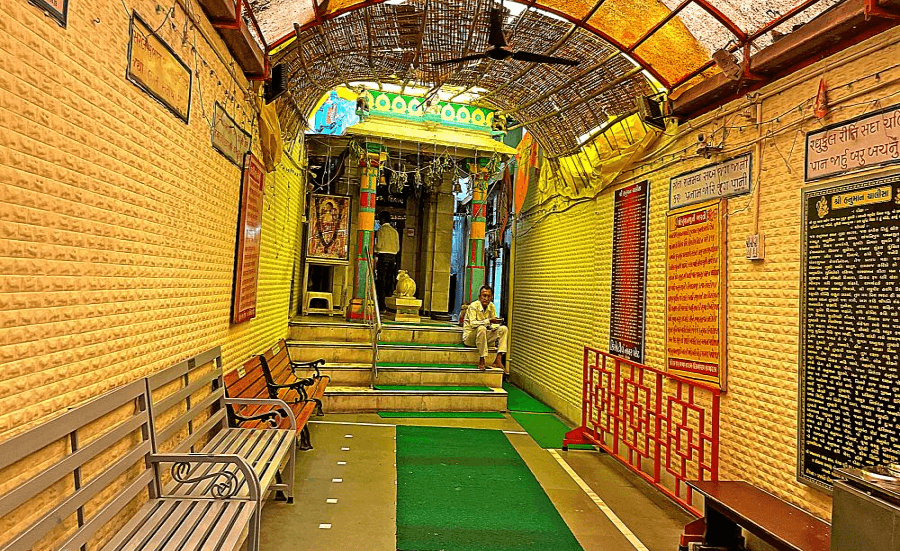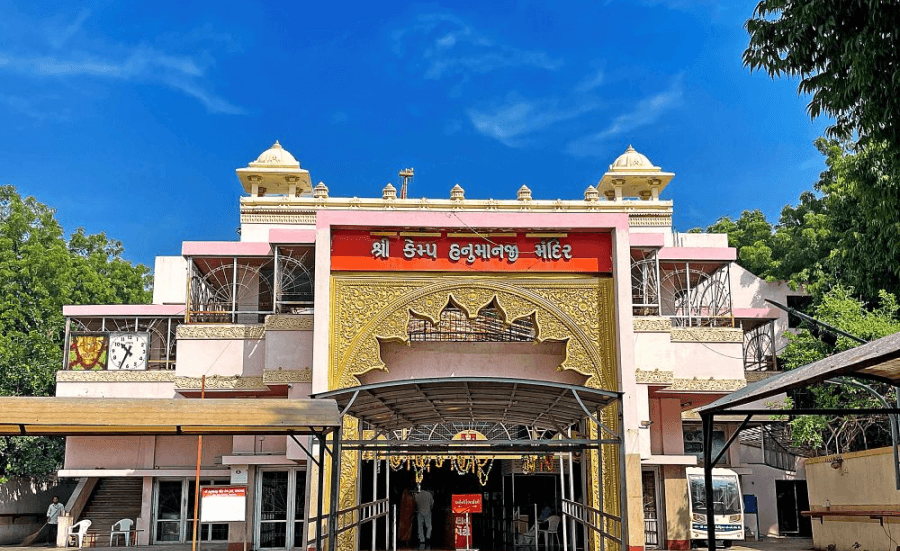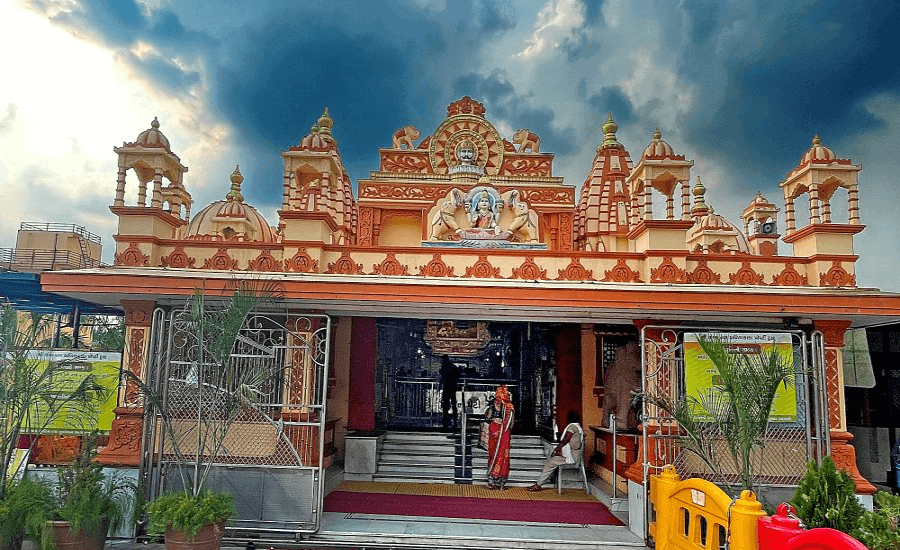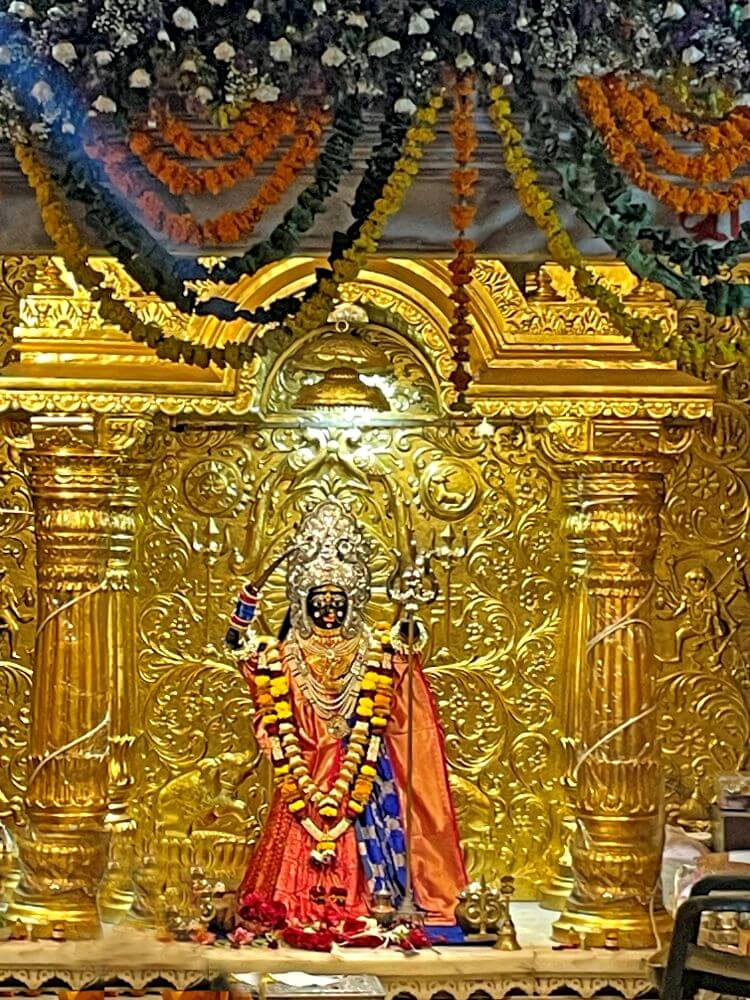 Since the founding of Ahmedabad, Mata Bhadrakali has been worshipped as the guardian deity of the city. She is revered as the Gramadevata (city goddess) of Ahmedabad. The temple is located next to the grand gate of Bhadra Fort, within a building in the Azamkhani Sarai. This ancient temple has witnessed the Sultanate, Mughal, British, and Maratha eras. One unique feature of the temple is that the Devinu Vahana (vehicle of the goddess) is changed daily. Local merchants begin all their auspicious activities by seeking Bhadrakali’s blessings, and Prime Minister Narendra Modi, regardless of his location, visits the temple at the start of the New Year for darshan (viewing the deity).
Since the founding of Ahmedabad, Mata Bhadrakali has been worshipped as the guardian deity of the city. She is revered as the Gramadevata (city goddess) of Ahmedabad. The temple is located next to the grand gate of Bhadra Fort, within a building in the Azamkhani Sarai. This ancient temple has witnessed the Sultanate, Mughal, British, and Maratha eras. One unique feature of the temple is that the Devinu Vahana (vehicle of the goddess) is changed daily. Local merchants begin all their auspicious activities by seeking Bhadrakali’s blessings, and Prime Minister Narendra Modi, regardless of his location, visits the temple at the start of the New Year for darshan (viewing the deity).
The city of Ahmedabad was founded by Ahmed Shah I (also known as Ahmed Khan) of the Muzaffarid dynasty. A poet himself, Ahmed Shah declared this new city his capital on 4 March 1411. According to legend, King Karna had previously established a city named Karnavati near present-day Ahmedabad. His reign ended in 1299, after which the Gujarat Sultanate was established. Ahmed Shah I belonged to this Sultanate. One day, while camping on the banks of the Sabarmati River, Ahmed Shah witnessed an unusual sight: a rabbit chasing a dog. Astonished by the scene, he consulted his spiritual advisor, who explained that the land possessed a special quality, making even timid creatures brave. Inspired by this, Ahmed Shah decided to establish his city here.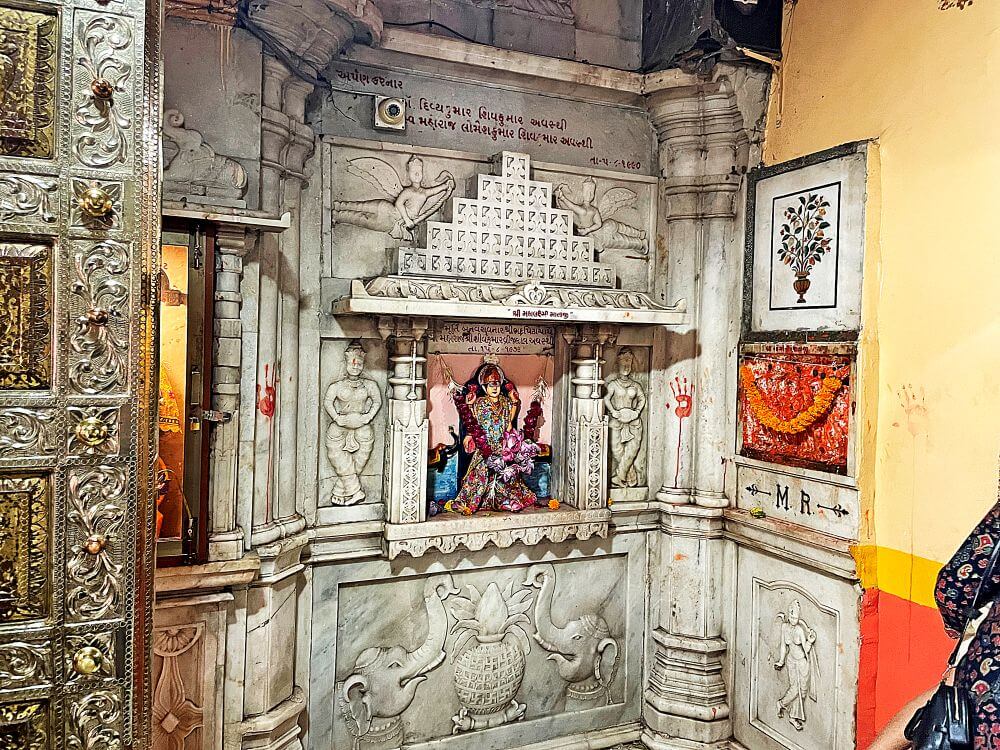
It is said that in the area where Manek Chowk now stands, there was once a temple dedicated to Bhadrakali. However, during military upheavals, the temple was damaged. When Ahmed Shah founded Ahmedabad, the Raj Purohit (royal priest) expressed a desire to re-establish the Bhadrakali Temple. In response, Ahmed Shah built the temple outside the fort, ensuring that the goddess’s gaze would protect the entire city. The temple is still maintained by the descendants of the royal priest.
Upon arriving in front of Bhadra Fort on the busy streets of Ahmedabad, the Bhadrakali Temple comes into view. The area outside the fort, once crowded with shops, has been cleared, creating a spacious open area. However, the area known as Bhadra Market still maintains a festive atmosphere. The ancient temple is located within a building adjacent to the fort’s grand gate. In front of the temple, there is a square iron-fenced area containing the ‘havan no kund’ (sacred fire pit), where devotees offer coconuts and clothes to the goddess.
The ancient temple is located within a building adjacent to the fort’s grand gate. In front of the temple, there is a square iron-fenced area containing the ‘havan no kund’ (sacred fire pit), where devotees offer coconuts and clothes to the goddess.
The temple was constructed by combining two shops from the old sarai (inn), resulting in a building with two large doors. Above the wooden frames of these doors are arches with intricate vine-like carvings. The temple has a small darshan mandap (viewing hall), with walls adorned with marble and intricately carved niches housing idols of Saraswati, Durga, and Lakshmi. Bhadrakali is believed to be a confluence of these three goddesses. In the sanctum, the black stone idol of Bhadrakali is enshrined on a finely carved Vajra Peeth (sacred seat) adorned with golden decorations.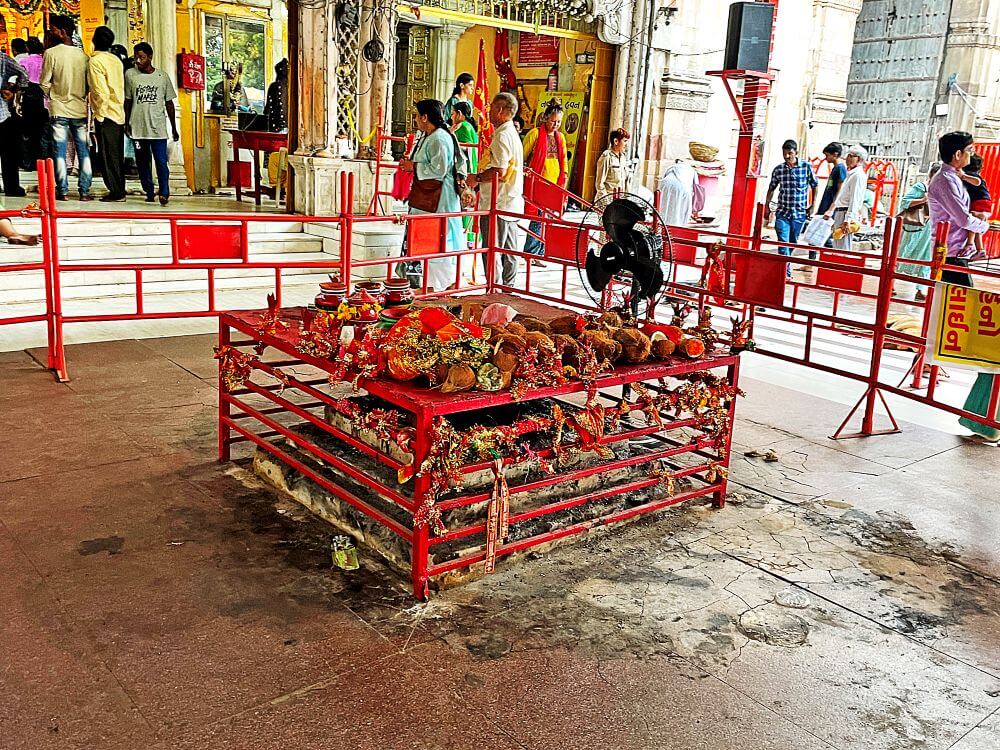 A unique feature of this idol is that every day the Devinu Vahana (goddess’s vehicle) is changed, with the lion, Nandi (Shiva’s bull), peacock, lotus, and elephant being among her various mounts. The goddess’s attire is also changed daily.
A unique feature of this idol is that every day the Devinu Vahana (goddess’s vehicle) is changed, with the lion, Nandi (Shiva’s bull), peacock, lotus, and elephant being among her various mounts. The goddess’s attire is also changed daily.
The temple celebrates both Sharadiya (Autumn) and Chaitra (Spring) Navaratri festivals with great enthusiasm. On Jyestha Shuddha Purnima (full moon day) and Kartika Shuddha Purnima, an Annakut (feast) is organised. After Navaratri, a grand Bhandara (community feast) is held, and every Sunday, Prasad (sacred food) is distributed to devotees. In the last week of January, the temple hosts a large Devi Bhagavat event.
Throughout the year, the temple sees large crowds, especially during Navaratri, Hanuman Jayanti, full moon days, Vasant Jayanti, and Diwali. During the auspicious Diwali festival, from Dhanteras to the start of the New Year, devotees come in large numbers to offer lotus flowers to the goddess and seek her blessings for good fortune. The temple is open for darshan from 5 a.m. to 10:15 p.m. every day.
